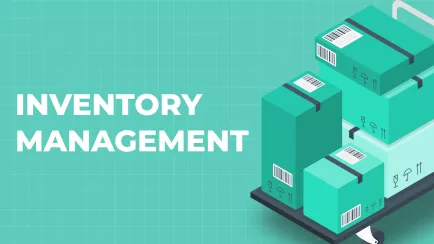The process of improvement never ends. The journey toward the next one begins as soon as a short-term goal is achieved.
Henry Ford's introduction of assembly line production was a groundbreaking moment for all manufacturing industries. In the nearly 100 years since then, much has changed. Yet, the process of unification and automation remains key to achieving more. Workers are replaced by intelligent systems, and assembly lines evolve into sequences of algorithm-driven operations.
In this article, we will explore the use of automation in Shopify, provide examples of its application, discuss the limitations of existing approaches, and offer several tips on implementing automation in your store.
What is Shopify automation?
First, let's define the term "automation."
Automation is the process of sequentially performing specified actions to achieve an expected result.
Behind this dry definition lies the answer to a key question: "Is automation possible?"
Automation requires three essential components:
- Process and Sequence – Understanding what needs to be done and in what order.
- Execution – Any element of automation can be executed automatically.
- Repeatability – The process must be repeatable without changes (i.e., not unique every time).
If you don’t yet understand how to implement these three components, it’s time to start thinking about it.
Examples of Shopify automation
Typical examples of tasks that lend themselves easily to automation include managing orders, inventory, Shopify custom reports, and more.
For instance:
- Tagging orders from returning customers. The process is triggered by the creation of a new order. Then, two steps follow: checking the number of previous orders from the customer and applying a tag.
- Segment customers by loyalty. You can calculate the total number of orders, frequency of purchases, and time between orders (it’s called RFM analysis). A list of customers with segment and their emails can be automatically uploaded to systems like SendGrid or Mailchimp to send discounts and special offers.
- Inventory automation and synchronization. More complex examples include synchronizing inventory with Airtable or Google Sheets. Also, modern inventory planning practices like XYZ analysis or ABC analysis can significantly help you with inventory management.
- Daily Reports. You can avoid daily or weekly tasks related to collecting sales information. Just set up Daily Reports or Shopify Dashboards with all necessary metrics.
Moreover, even generating a report is a form of automation, as the process of generating it meets the definition of automation.

Why automate your Shopify store?
After understanding the term automation, one can consider its necessity.
The goals of implementing automation in a Shopify store can include saving time or reducing errors, both of which are crucial for scaling your business or improving its efficiency.
If you have a well-established process or task that is repeated frequently and consumes time, it’s time to automate it.
Another answer to "why" is simply: "Why not?"
Shopify is a highly advanced platform with a vast community and many developers. No other alternative platform can boast such a variety of apps for automation. Furthermore, many apps without the words “flow” or “automate” in their names actually provide automation capabilities.
For example, Mipler Reports allows you to schedule emails with Shopify sales reports and even set up your process for handling reports, adding them to Google Sheets, or merging them with other data.
Explore related reports
Benefits of automating your Shopify store
The advantages of automation stem from the reasons for its implementation. The key benefits include:
- Time savings – Automation is all about saving time. Minutes saved accumulate into hours and workdays.
- Error minimization – A well-tuned process helps avoid technical errors and those that might arise during subsequent tasks.
- A robust base of automation solutions – Ensuring you are never left alone with a problem.
- Staff optimization – Automatically generated reports mean you no longer need to outsource tasks like creating monthly financial reports.
Tips for Enhancing Automation Efficiency
- Don’t replicate your manual process step-by-step – Between the starting point and the result, there is often room for optimization.
- Familiarize yourself with Shopify’s built-in functionality – Simple yet powerful tools like tags and metafields can be pivotal for automation.
- Explore existing automation solutions – Besides Shopify’s native Flow, several alternative apps (e.g., Mechanic, Mesa) offer greater ease of use and more advanced features.
- Study automation templates – Most Shopify automation apps provide hundreds of ready-to-use templates for typical tasks.
- Don’t limit yourself to one app – Different automation tasks may require diverse tools. Your Shopify store can simultaneously utilize Zapier, Flow, Mipler, and other apps for different needs.
- Learn from others – Resources like Shopify Community, Reddit, and Stack Overflow are rich with insights and assistance.
- Implement automation processes gradually – Avoid launching multiple new processes at once, as it can be difficult to pinpoint which new automation might not be working correctly.
How Mipler can help you automate your Shopify store
Mipler Reports is an ideal app for automating processes related to data retrieval, filtering, and aggregation.
Over the years, working with Shopify store owners, we’ve created hundreds of Shopify reports to automate tasks involving orders, inventory, and more.
Notable examples of implementations include:
- Creating daily production/delivery reports for a catering company (in combination with BOLD subscriptions).
- Monthly royalty calculations for vendors based on completed orders.
- Automatically sending inventory updates to suppliers.
- Monthly determination of the most profitable sales location for employee rewards.
- Auto-generating reports for delivery drivers, including orders, addresses, and products to deliver for the day.
So, if you have a process tied to large volumes of data or meticulous sheet work, the first thing that can help is setting up a system for automating your reporting.




